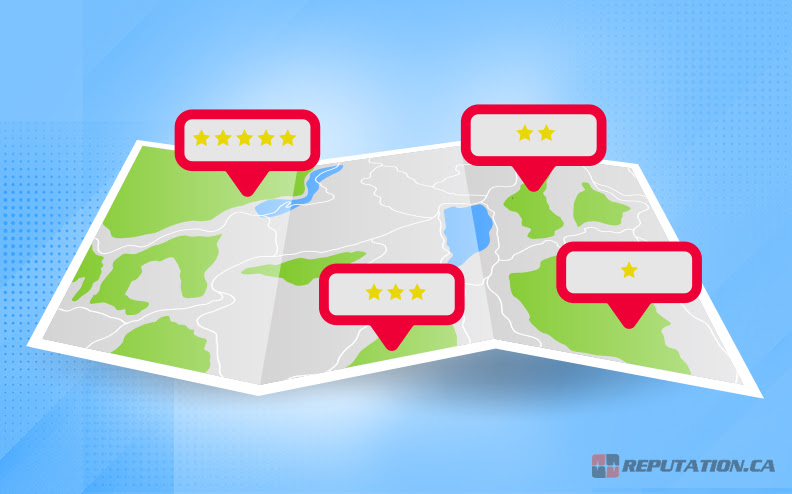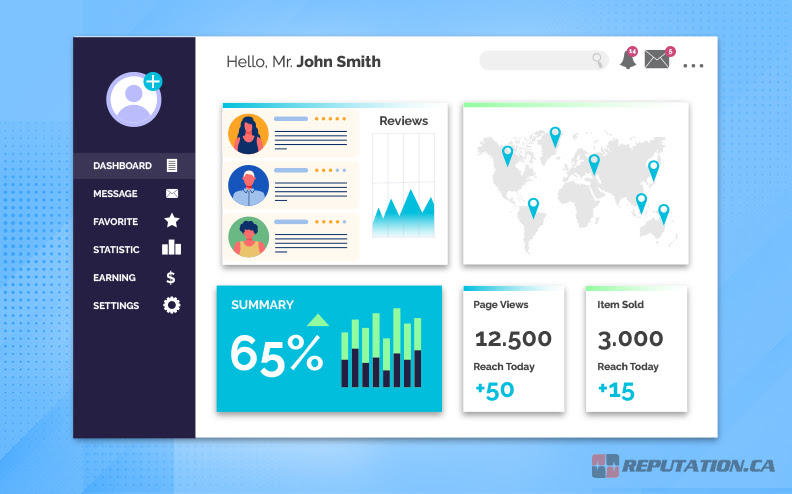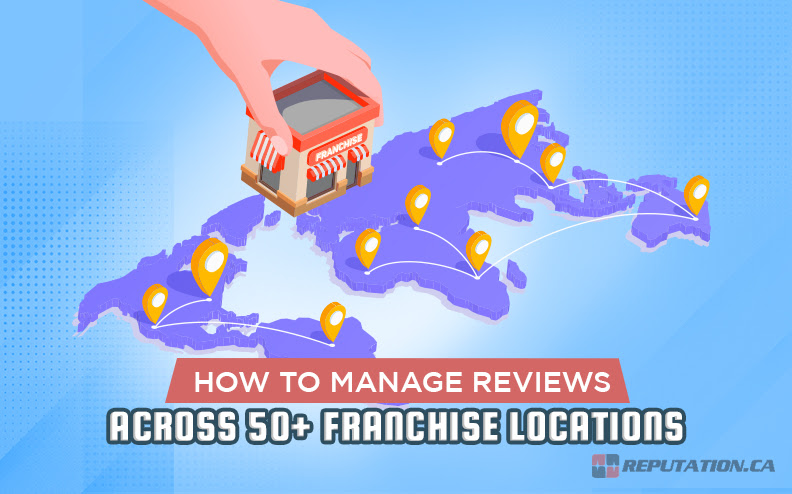About 93% of people read reviews before they visit a business. If you’re running 50 or more franchise locations, just one bad review at one of your stores can hurt the entire brand network. I’ve seen plenty of franchise owners learn this the hard way. The whole process gets trickier when tracking dozens of locations across multiple review sites at the same time.
Franchises run into certain problems that single-location businesses never have to handle. When some locations get lots of reviews and others get just a few, it creates perception problems for future customers. If one location isn’t managed well, it can drag down the entire brand’s reputation and make it harder for customers to find the business in local searches. Every time a new location opens, the stakes get even higher.
With multiple locations, reputation spreads much faster than it does for businesses with just one location. Each location acts as a reflection of your entire brand, and customers will judge the whole network based on what happens at just one location. That’s why every single review carries more weight for franchises.
The great news is that managing reviews across multiple locations works with the right system. Building systems keeps your brand steady across all locations while still letting each location keep its local feel. Review management can transform from a never-ending headache into something that actually helps you make more money and keep customers coming back.
The Review Problem for Multi-Location Franchises
When running a franchise with 50+ locations, review management turns into something completely different from what most people expect. A single restaurant might only need to worry about a handful of reviews each month. But with multiple franchises, you’re dealing with hundreds or even thousands of reviews spread across dozens of different locations. The numbers alone can make anyone’s head spin. All these reviews end up creating problems that most business owners never have to worry about.
Here’s what makes it so hard: customers don’t just read reviews for one location anymore. They compare the downtown location against the suburban one before they choose where they want to go. If the Main Street location has 200 great reviews while the mall location only has 30 so-so ones, guess where people are going to eat? This creates a real problem with how people see the brand, and it can hurt struggling locations even more.
When customers compare locations like this, it changes their decisions in ways that single-location owners never have to handle. The brand is only as strong as its weakest franchise. When customers see that reviews are all over the place, they start making assumptions about quality control.

The problems spread to other locations, too. The way people see a brand spreads faster than most realize. Customers start to question the entire brand. They ask themselves if all locations have the same problems. One bad week at a single franchise can undo months of hard work building a reputation across all locations.
Google makes this even more difficult. Their Map Pack rankings depend mostly on how many reviews a business has and how positive they are. If competitors have more recent reviews, they’ll show up first when people search for restaurants in the area. So locations with fewer reviews get buried in search results, and that makes it harder for them to bring in new customers and get more reviews.
Search visibility turns into a cycle that either helps or hurts each location. Locations with fewer reviews drop in the rankings and have a hard time bringing in new customers. At the same time, locations with lots of positive reviews keep moving up in search results. This creates a gap between the best and worst locations that just keeps growing over time.
One Dashboard for All Your Reviews
Most franchises have a hard time keeping track of all their reviews because they’re trying to watch everything in different places. Reviews come in on Google for one location, and at the same time, Yelp reviews arrive for another location. Then there’s the Facebook page where complaints show up that might not get noticed for three days. Many owners don’t even find out about problems until weeks after they started happening.
There’s a simple way to fix this. The solution is one main dashboard that brings together every single review from all the different sites and puts them in one place where everything is visible. This takes all the scattered reviews that were impossible to keep track of and turns them into something that’s actually manageable for the whole team. Staff can see patterns across all locations and catch problems early on before they have a chance to spread to other stores.
When there’s a single dashboard, it puts every review right there in one place. Staff won’t have to jump back and forth between different sites anymore, just to see what customers are saying. If the same negative comments start showing up at multiple locations, it becomes possible to fix the actual problem instead of just trying to put out fires after the fact. Customer responses can happen within just a few hours instead of taking days.

Everything works better when the corporate team and franchisees can look at the same information together. Corporate gets to see how the business is going across the board, while local managers can focus on their own stores. This doesn’t mean adding more restrictions or making the process more complicated – this setup actually makes everything less confusing for everyone. It just makes sure that everyone’s working from the same set of information.
Some franchisees might worry that they’ll lose their ability to respond in their own local way if everything goes through one system. But that’s not how these systems work at all. The system lets teams work together on replies instead of taking away local knowledge and input. A franchisee in Denver is always going to know their local market better than someone at headquarters does. The dashboard just makes sure their response fits with how the brand wants to communicate as a whole.
When teams work together like this, they get to keep all that local knowledge while still making sure everything sounds the same across the brand. Franchisees can write up replies that show they really know their local community. Then, corporate can review and recommend some changes before anything goes out to customers. This way, customers get replies that sound personal to their area and professional at the same time.
Teams of about four or five people can manage reviews for as many as thirty locations when they have the right tools. What makes this work is having tracking that happens in real time and sends alerts when something urgent comes up. Automatic replies can be set up for common feedback while still having real people look at anything that could be sensitive or needs extra attention.
Brand Voice That Feels Local
The real challenge here comes when franchises need to balance brand consistency with local personality. Customers want to feel like they’re dealing with a reliable brand and real people in their community. So, franchises can’t just copy and paste the same corporate replies everywhere.
A pizza franchise may use a standard response template for late delivery complaints. But the location in downtown Chicago could talk about local traffic patterns, while the suburban location might mention its commitment to the neighborhood. It’s the same core message with different local touches. Local adaptation turns mechanical replies into real connections. Customers can tell right away when replies sound like they came from someone who actually works in their area. Once franchisees get comfortable with this balance, they build stronger community relationships while keeping the brand reputation safe.

The goal is to train franchisees to stay on-brand while still sounding authentic. Help them get the brand voice without making them sound like robots – and this happens more than you’d think. Create response templates for common scenarios like late service or wrong orders. Then show them how to customize these templates for their particular situation.
Modern AI-powered review management tools help with this balance. These tools look at the tone and sentiment of each review. Then they recommend replies that match your brand standards while they adjust to local context. You get efficiency without giving up that personal touch. Technology takes care of the hard parts while keeping what customers want most. These systems learn your brand voice and recommend replies that sound natural for each location. Franchisees save time while customers get replies that feel professional and personal.
This strategy helps most when negative reviews come in. Instead of a generic corporate apology, customers get answers that address their exact issues while showing local accountability. A franchise owner who mentions the customer’s neighborhood or talks about local improvements shows they actually care about their community.
AI Tools That Scale Review Management
Modern AI tools have completely changed the way franchise owners manage reviews across dozens of locations. These systems can watch every review site at once and let people know immediately when something needs their attention. Franchise owners don’t have to check each location by hand anymore, which saves them hours every week.
What makes these tools so effective is their sentiment analysis features. They can identify angry customers before their frustration spreads to other people. When complaints get caught early, it stops negative reviews from spreading all over social media. AI can even write first drafts of replies for common situations like late deliveries or billing questions. Teams get a head start on fixing the problem while it’s still under control. This doesn’t mean robots are taking over customer service, though.
Managers still need real people to look at every response before it goes out to customers. The AI just takes care of the boring work, going through hundreds of reviews and pointing out the ones that need attention immediately. This frees up time to work with the customers who actually need help, so teams won’t be stuck writing the same replies over and over.

These connected systems also link up review data with the systems already in use. Because everything works together so well, franchises miss far fewer complaints and respond to customers faster. When someone leaves a negative review, the system can automatically create a follow-up item in the CRM. It might even send out a discount code or an email to keep the customer happy, and nobody has to remember the next steps.
The ability to identify patterns is probably the best feature these tools have. AI can see when three locations in the same area are all receiving complaints about slow service during the lunch rush. You could easily miss that connection if you were just looking at reviews one location at a time. But when you look at everything together, these patterns jump right out at you.
Striking the right balance between being fast and being genuine with your customers is the main priority. Customers can usually tell when a response sounds like a robot wrote it, or when it’s the same response everyone else gets. Real replies help build trust with customers, while letting the computer sort through everything saves time. What people think of a business relies on how human it sounds, even when computers are doing most of the work behind the scenes.
Make Reviews Work for Your Business
You need someone at the top who keeps the brand message the same across all locations and local teams who can connect with customers in a real way. You need technology that actually makes the job easier instead of harder, and training that helps everyone stay on the same page. I’ve seen that most franchises never quite get how much this connection matters.
Every single review, every response written, and every conversation with customers across all locations will decide if people choose your business or just go to the competitor instead. Right now, what people see online is pretty much the storefront, and when it’s managed well, it protects income and sets everything up for growth.

What people read online is what decides if future customers will trust a business before picking up the phone. When franchises don’t manage their reviews well, they lose thousands of dollars in sales every single month. When customers see complaints that nobody answered or responses that sound like a robot wrote them, they just think the business doesn’t care about what happens to them.
The franchises that are doing well have figured out how to take something that used to cause them stress and turn it into something that actually helps their business. They now use their review management to build real trust with people in their communities and create the kind of relationships that keep customers coming back again and again. This change makes a big difference in their bottom line.
With that in mind, if you’re ready to make review management something that helps your franchise succeed, you don’t have to figure it all out by yourself. We’re Canada’s leading experts who manage reviews, social media, public relations, and crisis response. If a business is dealing with cancel culture or just trying to build a stronger presence online, we’re here to help. Contact us at Reputation.ca for help that’s designed specifically for what you need!







